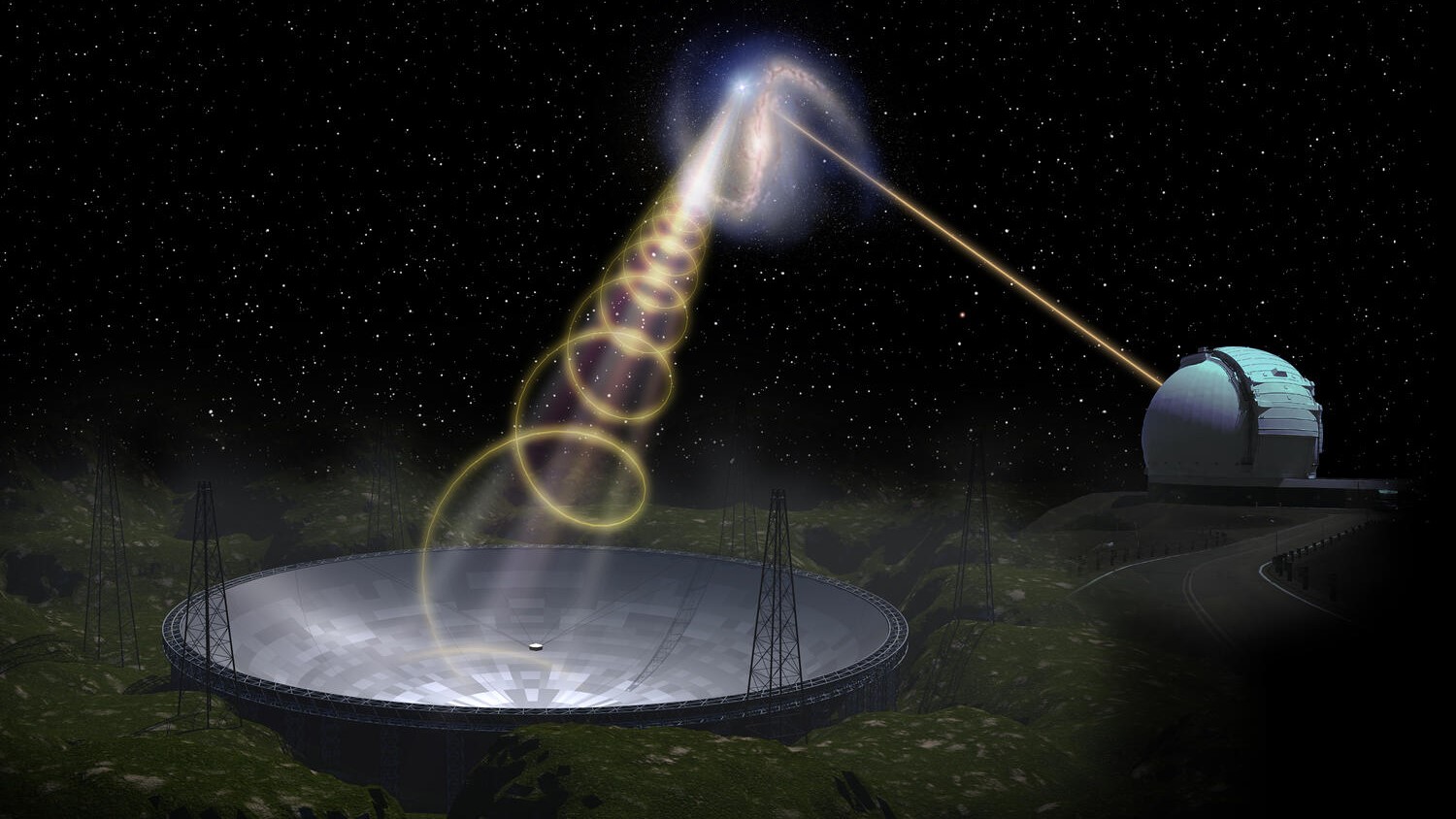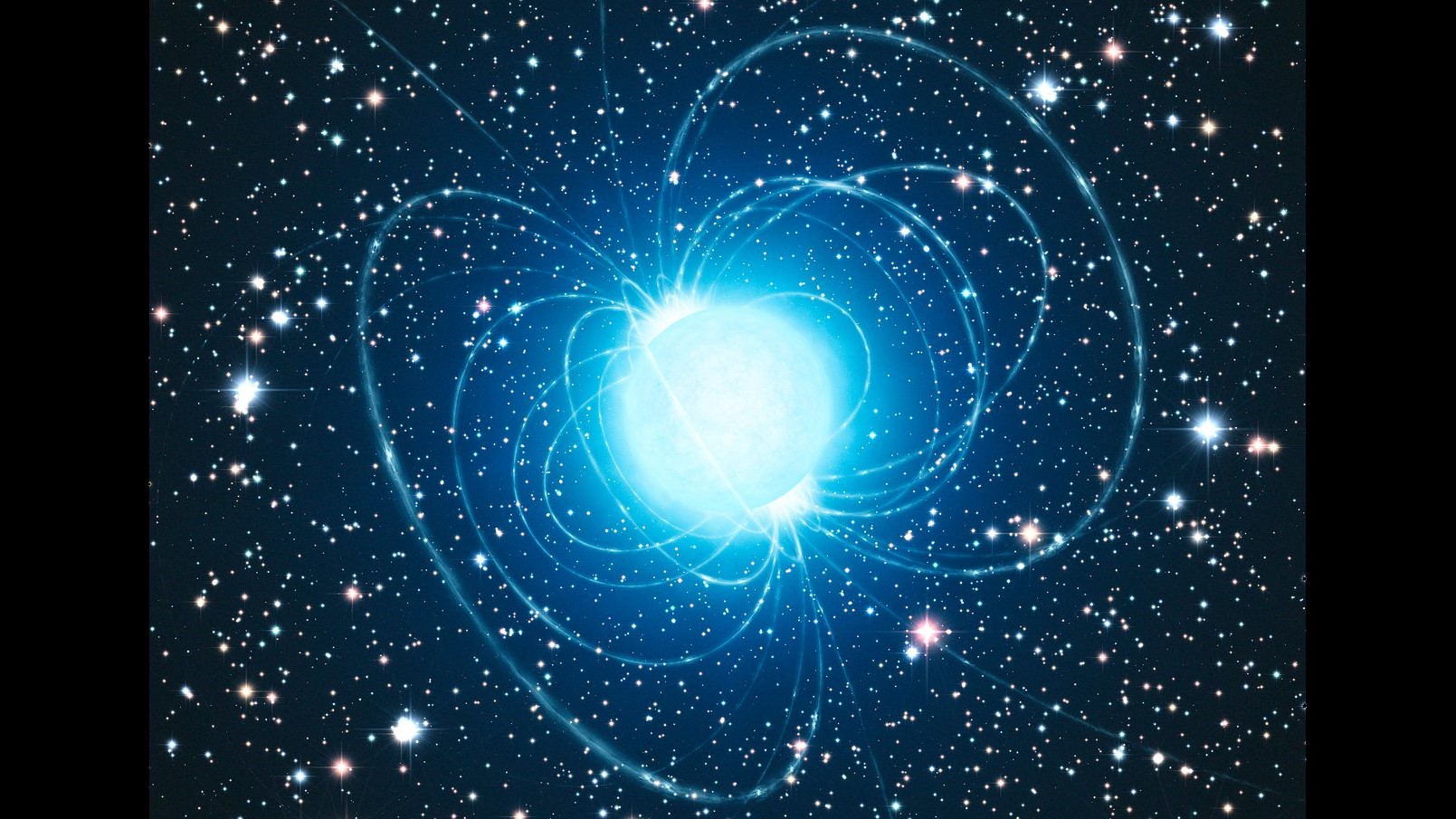Repeating fast radio burst with weird magnetic field challenges magnetar explanation
New observations are challenging a hypothesis about what produces these energetic bursts of radio waves.

A repeating fast radio burst (FRB) with a changeable, polarized magnetic field has deepened the mystery of what produces these enigmatic millisecond-long bursts of radio waves from deep space.
Since their discovery in 2007, FRBs have been one of the most enduring mysteries in astrophysics. They are extremely powerful, emitting as much energy in a fraction of a second as the sun pumps out in three days. Some FRBs release a single burst and then are silent, while others repeat. Most come from distant galaxies, although one FRB has been discovered in our galaxy.
Although nobody knows what produces FRBs, highly magnetic neutron stars called magnetars, which are the most magnetic objects known in existence, are the chief suspects, at least for the repeating FRBs.
Related: Magnetar may hold clues to the mystery of fast radio bursts
Now, new observations of a repeating FRB cataloged as FRB 20201124A has placed the magnetar hypothesis under the microscope, and found some inconsistencies.
FRB 20201124A was discovered on Nov. 24, 2020, by the Canadian Hydrogen Intensity Mapping Experiment (CHIME). In spring 2021, China- and U.S.-based scientists used the Five-hundred-meter Aperture Spherical radio Telescope (FAST) — the world's largest single-dish radio telescope — in China to detect 1,863 bursts coming from FRB 20201124A over the course of 54 days.
Among those bursts were some new, puzzling discoveries. Notably, for the first 36 days of observation, the strength of the magnetic field in the immediate vicinity of the FRB source varied. Then, for the next 18 days, it remained constant, before disappearing. There was also strong circular polarization (describing the direction of oscillation of the radio waves) in the radio signals, and oscillating linear and circular polarization, as well as variations in the angle of the polarization depending on the wavelength.
Get the Space.com Newsletter
Breaking space news, the latest updates on rocket launches, skywatching events and more!
None of these behaviors had ever been witnessed in an FRB.
The findings "revealed a complex, dynamically evolving, magnetized environment that was never imagined before," study co-author Bing Zhang, a distinguished professor of physics and astronomy at the University of Nevada, Las Vegas, said in a statement. This magnetically active environment seems to be within 1 astronomical unit — 93 million miles (150 million kilometers), the average distance between Earth and the sun — of the FRB source.
But could that source be a magnetar?

When the research team followed up with telescopes at the W. M. Keck Observatory on Mauna Kea in Hawaii, they made a surprise discovery: The origin of FRB 20201124A was in a barred spiral galaxy named SDSS J050803, which is about 1.3 billion light-years away and looks very much like our own Milky Way galaxy.
Furthermore, the observations revealed that the source of FRB 20201124A was in a very nondescript region of the galaxy. In contrast, magnetars are typically found in dense star-forming regions.
Neutron stars are born from massive stars that undergo catastrophic collapse at the ends of their lives and explode. In certain conditions the exploding star produces a more magnetic neutron star than usual — a magnetar. Superluminous supernovas and gamma-ray bursts have been suggested as the progenitors of magnetars. However, because such stars don't live very long, they die in the same star-forming region that gave birth to them. Gamma-ray bursts, in particular, tend to occur in galaxies with lower abundances of heavy elements (metals). However, the host galaxy of FRB 20201124A is metal-rich.
"These observations brought us back to the drawing board," Zhang said. "It is clear that FRBs are more mysterious than what we have imagined."
If the source of the FRB is a magnetar, then it is behaving very oddly and may not be alone. "Something else might be in the vicinity of the FRB engine, possibly a binary companion," Zhang said. "More multi-wavelength observational campaigns are needed to further unveil the nature of these objects."
The results were published Sept. 21 in the journal Nature.
Follow Keith Cooper on Twitter @21stCenturySETI. Follow us on Twitter @Spacedotcom and on Facebook.
Join our Space Forums to keep talking space on the latest missions, night sky and more! And if you have a news tip, correction or comment, let us know at: community@space.com.

Keith Cooper is a freelance science journalist and editor in the United Kingdom, and has a degree in physics and astrophysics from the University of Manchester. He's the author of "The Contact Paradox: Challenging Our Assumptions in the Search for Extraterrestrial Intelligence" (Bloomsbury Sigma, 2020) and has written articles on astronomy, space, physics and astrobiology for a multitude of magazines and websites.









